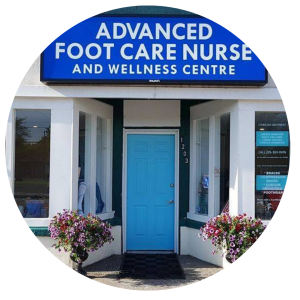articles
How do I treat some common foot conditions at home?

- Janis Boudreau
Calluses & Hard Skin
Painful Corns
Have you developed a painful corn during lockdown? Here’s what you can do about this yourself until your next visit to our clinic. File over the overlying hard skin to remove some of the raised skin. Use a urea-based cream such as Flexitol Intensely Nourishing Foot Cream Footlogix Foam or Gehwol Lotion Foot Products to moisturise your skin. Try and identify the cause of your corn – is it a tight pair of shoes? If your corn has gone bloodshot or there is pus please contact us for more detailed advice.
Fungal Skin & Nails
Ingrown Toenails
Toenails can become painfully embedded in the skin at the sides. This can be prevented by not cutting your toenails too short. Follow the outline of your toe and file away any sharp edges. Soaking feet in saltwater can prevent infection and reduce swelling. Wearing shoes with a wide toe-box will help prevent the toes from being pinched and any ingrowing nail spike from being pushed further into the skin. If your toe becomes severely infected, then a course of antibiotics may be required from your GP, but this will only treat the infection, not the cause – the nail spike should be removed to prevent this recurring
A simple foot routine will help keep your feet in good condition, including:
wearing suitable footwear
keeping your toenails short
regularly moisturizing your feet
checking for cracked skin, blisters and signs of infection.
We are always here for you. Feel free to call and book in for a office or home appointment with one of our professional Footcare Nurses! —
Janis Boudreau
CEO,
Advanced Foot Care Nurse and Wellness Centre Inc.



